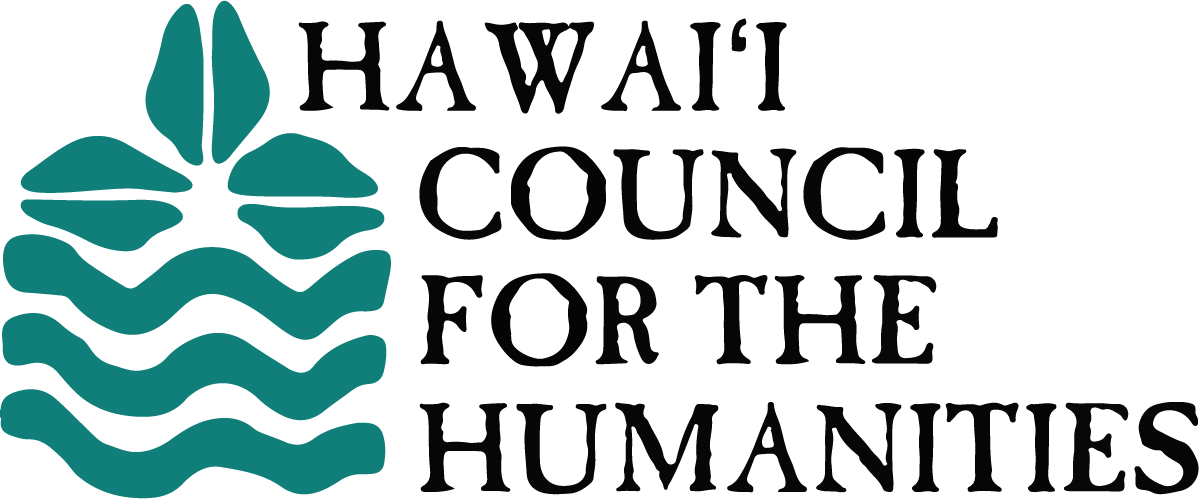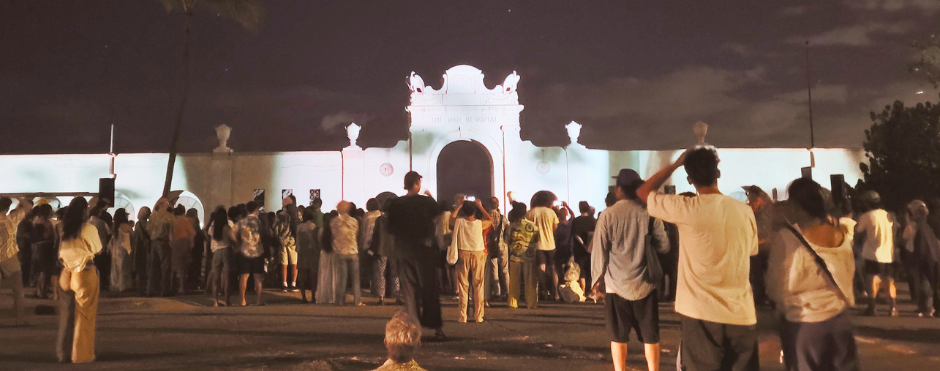Photo Above: At The Renkon Project in Waikīkī in remembrance of the 80th anniversary of the nuclear bombing of Hiroshima and Nagasaki. (Photo credit: Aiko Yamashiro)
Your aloha means so much to us. Mahalo nui for all the care and support shown to our team following our announcement in August of staffing and program cuts after our DOGE termination. Your aloha means a lot to us and is helping carry our former staff and current staff, all on our own journeys to continue to do meaningful work to enrich lives, broaden perspectives, and strengthen communities.
On Oct 1, 2025, day 1 of the federal government shutdown, the Washington Post reported that the White House had fired the majority of the members of the National Council on the Humanities, with only four of the 26 presidentially-appointed members remaining. The purpose of the National Council board is to advise the Chair of the National Endowment for the Humanities on policy issues, grants, and funding. The board is made up of humanities scholars and experts from across the nation, who have all gone through a rigorous selection and screening process. Hawai’i is rarely represented in this body, and it felt like a victory to have Dr. David Kekaulike Sing, an educator and major leader in Hawaiian education, appointed by President Biden to the National Council on the Humanities Board in 2024. Unfortunately, Dr. Sing was one of the members suddenly removed.
“I got this one-line email dismissal. It feels poho [sad, waste]. It is a missed opportunity for the current administration to dismiss this group of highly regarded scholars with many years of experience in the area of the humanities, representing projects that are the heart and soul of America. Although my time on the NEH Council was just short of two years, I was enthusiastic about the important work and the talented people I was working with. There was such a wide representation of scholarship, leadership, and knowledge. I felt honored to represent Hawai‘i and I wanted to bring those perspectives and advocate for Hawai‘i and the Pacific. Especially at this point in our country—the history, language, culture and values of our people should be reinforced with the work that NEH has been doing in preserving, showcasing, supporting and celebrating the foundational values and culture of our nation.” – Dr. David Kekaulike Sing
The government shutdown is now entering week 4, and community suffering is intensifying alongside federal layoffs and cuts to resources and social services. NEH’s support of our local work and its longstanding commitment to research, education, civic reflection and connection cannot be relied on in this time of destruction and upheaval.
Because of the dedicated support of individuals, foundations, and our State Grant in Aid for Hawaiʻi History Day FY2026, Hawaiʻi Council for the Humanities is finding stronger footing for the year ahead. As our vision teaches us—Nā Mana Wai Pio ʻOle e Hoʻōla Ana i ka ʻĀina—the many inextinguishable sources of water make our land live. Our cultures, storytelling, histories, community connections are inextinguishable. Now is the time to move like water—to change, adapt, and to protect humanities’ continued flow.
For 2025–2026, we will focus on Hawai‘i History Day as a program that strengthens the ecosystem of elementary to higher education; teacher development; civics; libraries, museums, archives and cultural centers; and larger community engagement. We will also continue our collaborative programs like the Lei Pua ‘Ala Queer Histories of Hawai‘i Project, which tells stories of vibrancy and resilience as a way to build safety for communities increasingly under attack. All our collaborative work strives to deepen our reflection, understanding, and connection with each other, and nourish our local humanities ecosystem and larger community.
In August I attended an evening of dance and film in Waikīkī organized by Noe Tanigawa, Jennifer Dang, and others of The Renkon Project—a series of experiences in remembrance of the 80th anniversary of the nuclear bombing of Hiroshima and Nagasaki. A master butoh dancer from Japan had arrived in Hawaiʻi a week prior, teaching free workshops to people interested in exploring this dance form, known for its misshapen tortured movement, that was created as a cultural response to the horrors of WWII.
A group of 200 or so of all ages and backgrounds sat in a circle on the grass makai of Kapiʻolani Park, watching these dancers stretch and collapse, lit by candles as the sun set over the ocean. We then walked together to the natatorium war memorial, where an experimental film weaving together Japanese internment, nuclear weapons, and modern dance was being projected onto the pink walls and arches of the natatorium, all to the heartbeat of taiko played by sensei Kenny Endo.
We gathered together to feel the stories in cultural expression, historical documents. We witnessed grief and destruction. In the silence after our applause, people reached for each other in conversation and awe, wanting to share the depth of our experience. The Mayor of Hiroshima recorded a message of thanks to our gathering, saying that art and culture are absolutely necessary to “create the culture of peace that will make possible a world without war.”
I felt moved to write some lines…
are we not all vessels? she used her mouth to gape she screamedsilently carrying light can you feel this history in your own body flicker shadow can you join this dance? how many stories can you give life to?
The public humanities move us to reach toward each other, to treasure life. We hope the many voices in this newsletter bring nourishment and peace to you.
Photo credit: Aiko Yamashiro

